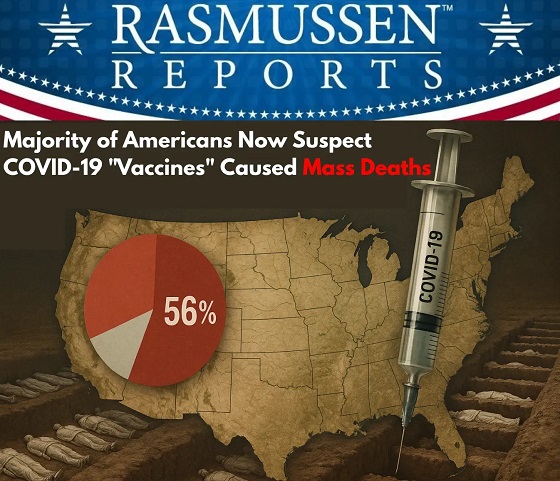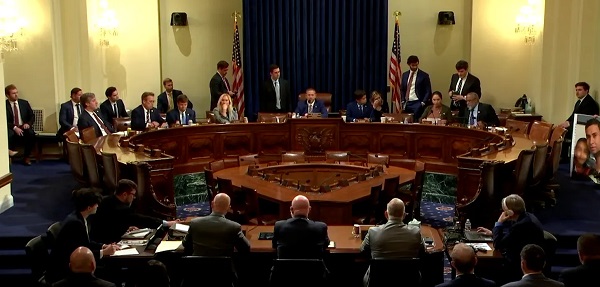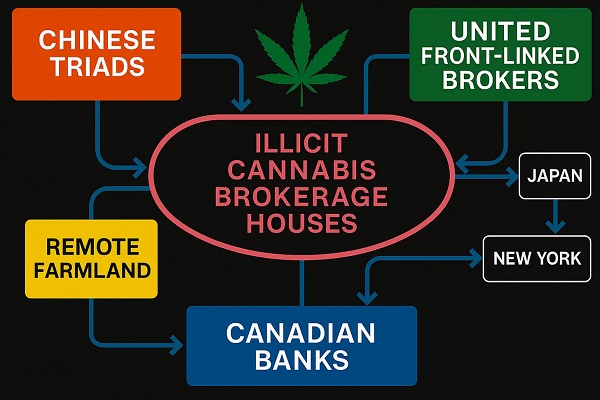COVID-19
Look what they did to our antibodies

Our immune systems are supposed to fight viruses. Now they invite them round for tea. It’s all down to IgG4…
Have you heard about the IgG4 antibody switch? It’s been glossed over in official discussions about Covid-19 ‘vaccines’, but it’s the elephant in the room. Let’s break it down and explore why this may matter more than we’re being told.
The antibody switch: what’s the big deal?
Our immune system is like a well-trained army, with different types of antibodies serving as its soldiers. Among them, IgG antibodies are the frontline warriors, designed to neutralize viruses and protect us from infections. But here’s the catch: not all IgG antibodies are created equal. Think of IgG4 antibodies as the peacekeepers of the immune system. They’re not fighters like the other IgG subclasses—they’re more about tolerance, calming things down. They’re certainly not about launching an attack.
Now, here’s where it gets interesting (and worrying).
Studies have shown that repeated Covid-19 mRNA injections—especially after the second dose or booster—cause the body to switch from producing the more effective IgG3 antibodies to producing IgG4. Essentially, the immune system is shifting toward tolerance rather than attack.
Sounds harmless, right? Well, not so fast. Here’s a look at what this shift might mean:
1. More Covid-19 infections
Imagine your immune system being rewired to tolerate the virus instead of fighting it. That’s essentially what the IgG4 switch could entail. A study from the Cleveland Clinic found a troubling trend: the more Covid-19 vaccine doses a person received, the higher their risk of getting infected. This isn’t what we were promised with “safe and effective,” is it? The IgG4 antibodies might be making the body less effective at dealing with the virus, leaving vaccinated individuals more susceptible to reinfections.
2. The potential for worse outcomes
IgG4 antibodies are great if you’re dealing with allergies, as they help the body tolerate allergens. But when it comes to fighting a virus like SARS-CoV-2, this tolerance could backfire. Instead of neutralizing the virus, the immune system might let it hang around longer, potentially leading to more severe disease outcomes. It’s like inviting a burglar into your house and offering them tea instead of calling the police.
3. The risk of other conditions
This shift to IgG4 isn’t just about Covid-19. It could open the door to other IgG4-related diseases (known as IgG4-RD). These are a group of conditions where the immune system starts attacking various organs, causing inflammation and fibrosis (thickening or scarring of tissues). Examples include autoimmune pancreatitis, kidney disease, and even conditions affecting the lungs or brain. There have been reports of individuals developing these conditions after receiving the mRNA vaccines. Coincidence? Maybe. But it’s enough to warrant serious investigation.
Below is a list of IgG4-related diseases (IgG4-RD) and other pathologies associated with elevated IgG4 levels that could also be related to IgG4 rising after mRNA injections:
- Type 1 Autoimmune Pancreatitis (AIP): Chronic inflammation of the pancreas, often presenting with abdominal pain, jaundice, or weight loss. It is one of the most common manifestations of IgG4-RD.
- Sialadenitis (Mikulicz’s Disease): Enlargement of the salivary and lacrimal glands, leading to dry mouth and eyes. This is a classic presentation of IgG4-RD in the head and neck region (Stone et al., 2012).
- Retroperitoneal Fibrosis: Thickening and fibrosis of the tissue behind the peritoneum, which can lead to ureteral obstruction and kidney damage (Stone et al., 2012).
- Riedel’s Thyroiditis: A rare form of thyroiditis involving fibrosis of the thyroid gland. It can present as a hard, fixed thyroid mass that mimics malignancy (Stone et al., 2012).
- Küttner’s Tumor (Chronic Sclerosing Sialadenitis): Affects the submandibular glands, causing enlargement and fibrosis, often mistaken for a tumor (Stone et al., 2012).
- IgG4-Related Sclerosing Cholangitis: Involves the bile ducts, often associated with autoimmune pancreatitis. Can lead to jaundice and bile duct obstruction (Stone et al., 2012).
- IgG4-Related Ophthalmic Disease: Involves orbital inflammation and can cause proptosis (bulging eyes), double vision, or orbital masses (Stone et al., 2012; Uchida et al., 2022).
- IgG4-Related Aortitis and Periaortitis: Inflammation of the aorta and surrounding tissues, which may lead to aneurysms or vascular complications (Stone et al., 2012).
- IgG4-Related Kidney Disease: Includes tubulointerstitial nephritis and other renal manifestations, leading to kidney dysfunction or masses (Stone et al., 2012; Uchida et al., 2022).
- IgG4-Related Lung Disease: Pulmonary involvement, presenting with inflammatory pseudotumors, interstitial pneumonia, or pleural thickening (Stone et al., 2012).
- IgG4-Related Lymphadenopathy: Enlargement of lymph nodes that may mimic lymphoma (Stone et al., 2012).
- IgG4-Related Skin Disease: While less common, presents as various cutaneous lesions, including plaques or nodules (Stone et al., 2012).
- IgG4-Related Prostatitis: Enlargement of the prostate, causing lower urinary tract symptoms (Stone et al., 2012).
- IgG4-Related Hypophysitis: Involves inflammation of the pituitary gland, leading to hormonal imbalances such as adrenal insufficiency or diabetes insipidus (Stone et al., 2012).
- IgG4-Related Pachymeningitis: Inflammation of the dura mater (the outer membrane covering the brain and spinal cord), leading to headaches, cranial nerve palsies, or other neurological symptoms (Stone et al., 2012).
That’s not all. There are potentially broader implications of elevated IgG4 levels that we must consider:
- Repeated infections. Elevated IgG4 levels may impair the immune system’s ability to clear infections, as IgG4 is less effective at neutralizing pathogens (Aalberse, 2009; Irrgang, 2021).
- Autoimmune diseases. Elevated IgG4 levels may contribute to autoimmune processes, where the immune system attacks its own tissues (Watad, 2021).
- Cancer risks. Chronic inflammation caused by IgG4-related conditions may increase the risk of certain malignancies. While not directly caused by IgG4, this link warrants further research (Uchida, 2022).
- Idiopathic Interstitial Lung Disease. Chronic inflammation and fibrosis in the lungs may lead to respiratory symptoms, further complicating the clinical picture (Stone, 2012).
- Systemic Vasculitis. Inflammation of blood vessels associated with IgG4-RD can cause systemic complications and end-organ damage (Stone, 2012).
Why isn’t this being talked about?
Good question. The IgG4 switch is a complex phenomenon, and scientists are still trying to figure out its full implications. However, one thing is clear: this isn’t a simple black-and-white issue as the long-term effects of repeated mRNA shots are only now coming into focus.
Health agencies like the CDC and WHO argue that the benefits of vaccination outweigh the risks. But should we ignore potential red flags, especially when they involve changes to our immune system long term? Especially in populations that had virtually no risk from Covid-19 (i.e. children)? Absolutely not.
The science isn’t settled – but nor is this speculation
Elevated IgG4 levels are documented. Multiple studies confirm that repeated mRNA injections lead to a significant increase in IgG4 antibodies (Irrgang et al., 2021). This isn’t speculation—it’s a fact.
Case reports suggest a link. Individuals have developed IgG4-related diseases shortly after getting injected (Uchida et al., 2022). While these cases are rare, as not many practitioners have linked the Covid 19 gene therapy to a certain pathology, they highlight a potential connection that needs further investigation.
The immune response Is complex. The IgG4 switch might be the immune system’s way of adapting to repeated exposure to the spike protein in the vaccines. But this adaptation could come with unintended consequences, including reduced vaccine efficacy and heightened risk of certain diseases. And the most important question is the duration of this fact which we will only know in a decade.
More studies are needed. The science is evolving, and more research is needed to fully understand the implications of this antibody switch. For now, it’s clear that this isn’t a one-size-fits-all situation.
What can we do?
As individuals, the best thing we can do is stay informed. Ask questions if asked to be vaccinated: demand transparency, and weigh the risks and benefits of any medical intervention.
If you yourself have been affected by any of the pathologies above, even months or years after the Covid injections, ask your healthcare providers to assess a potential association. You can test for Covid antibodies (when over 1000 BAU, it is reasonable to assume that you are still producing spike proteins after the injections). You can also get tested for IgG4s (for Covid and generally), for spike proteins (in serum, immune cells, exosomes, body fluids) or for mRNA (in serum, exosomes or any body fluid).
For policymakers and health agencies, it’s crucial to continue monitoring these injections’ long-term effects and be honest about potential risks. Ignoring the elephant in the room won’t make it go away.
Final thoughts
The IgG4 switch is an alarming consequence of repeated Covid-19 mRNA vaccinations. The evidence so far suggests that this phenomenon could have significant implications for immunity, vaccine efficacy, and long-term health. It’s time to have an open, honest conversation about those ‘trade-offs’—and to keep the spotlight on the elephant in the room. This is certainly another red flag for the continuation of the Covid 19 gene therapy and adds to the calls for a moratorium of this technology. Especially considering further promotion of mRNA technologies in the US, Europe, and Russia, we urgently need independent scientists to gather at a roundtable with those pushing for even more use. The World Council for Health has repeatedly called for a moratorium on the technology. This is just the latest, essential piece we’re adding to the puzzle.
References
Aalberse, R. C., Stapel, S. O., Schuurman, J., & Rispens, T. (2009). Immunoglobulin G4: an odd antibody. Clinical & Experimental Allergy, 39(4), 469-477. https://doi.org/10.1111/j.
Bergamaschi, C., Terpos, E., Rosati, M., Angel, M., Bear, J., Stellas, D., … & Felber, B. K. (2021). Systemic IL-15, IFN-γ, and IP-10/CXCL10 signature associated with effective immune response to SARS-CoV-2 in BNT162b2 mRNA vaccine recipients. Cell Reports, 36(6), 109504. https://doi.org/10.1016/j.
Uchida, K., Ito, S., Nakamura, Y., Hoshino, Y., Abe, Y., Ito, T., … & Okazaki, K. (2022). IgG4-related disease after BNT162b2 COVID-19 mRNA vaccination: A case report. Vaccine, 40(22), 3079-3082. https://doi.org/10.1016/j.
Irrgang, P., Gerling, J., Kocher, K., Lapuente, D., Steininger, P., Habenicht, K., … & Überla, K. (2021). Class switch towards non-inflammatory, spike-specific IgG4 antibodies after repeated SARS-CoV-2 mRNA vaccination. medRxiv. https://doi.org/10.1101/2022.
Kang, C. K., Kim, M., Lee, S., Kim, G., Choe, P. G., Park, W. B., … & Oh, M. D. (2022). Longitudinal analysis of SARS-CoV-2 specific antibody responses after COVID-19 vaccination. Journal of Korean Medical Science, 37(4), e35. https://doi.org/10.3346/jkms.
Lozano-Ojalvo, D., Camara, C., Lopez-Granados, E., Nozal, P., Del Pino-Molina, L., Bravo-Gallego, L. Y., … & Paz-Artal, E. (2021). Differential effects of the second SARS-CoV-2 mRNA vaccine dose on T cell immunity in naive and COVID-19 recovered individuals. Cell Reports, 36(8), 109570. https://doi.org/10.1016/j.
Perugino, C. A., AlSalem, S. B., Mattoo, H., Della-Torre, E., Mahajan, V., Ganesh, G., … & Stone, J. H. (2021). Identification of galectin-3 as an autoantigen in patients with IgG4-related disease. Journal of Allergy and Clinical Immunology, 147(2), 736-745. https://doi.org/10.1016/j.
Stone, J. H., Zen, Y., & Deshpande, V. (2012). IgG4-related disease. New England Journal of Medicine, 366(6), 539-551. https://doi.org/10.1056/
World Health Organization (WHO). (2023). COVID-19 vaccines: safety surveillance manual.
Subscribe to World Council for Health.
For the full experience, upgrade your subscription.
COVID-19
Freedom Convoy leader Tamara Lich puts her ‘trust’ in Jesus while awaiting sentencing

From LifeSiteNews
With a sentence hearing coming up on October 7 and the possibility of facing seven years in jail, Tamara Lich responded to a supporter by saying, ‘I trust His plan for me.’
Freedom Convoy co-leader Tamara Lich, who faces a potential seven-year jail sentence for her role in the 2022 protests, says she has put her “trust” in Jesus regarding the outcome of her trial sentencing verdict.
On Wednesday, a Lich supporter offered kind words, telling her, as well as colleague Chris Barber, that they and their “families are lifted to The Lord in prayer and support from ALL Canadians who see this political persecution for what it is.”
“Never forget that. Your stand for freedom and insight for our NATION is ABSOLUTELY Amazing. You are HEROES. Thank you,” X user “bob” wrote in reply.
In response, Lich wrote, “Thank you for your support and kind words.”
“I trust His plan for me,” she added.
X user ‘‘bob” had replied to Lich’s post on September 14 about an update to her and Barber’s looming sentencing verdict.
Lich was arrested on February 17, 2022, in Ottawa. Barber was arrested the same day.
The sentencing trial for Lich and Barber took place in July in a hearing. Earlier this year, they were found guilty of mischief in their roles in the 2022 convoy.
As reported by LifeSiteNews, Lich revealed that the Canadian federal government is looking to put her in jail for no less than seven years and Barber for eight years.
A sentencing hearing has been scheduled in their case for October 7 in Ottawa.
Earlier this week, LifeSiteNews reported Lich called out Canada’s Department of Public Safety for “lies” after it boasted via an internal audit that it acted with a high “moral” standard in dealing with the 2022 protest against COVID mandates.
Both Lich and Barber were the main faces of the 2022 Freedom Convoy, which descended upon Ottawa demanding an end to all COVID mandates.
In early 2022, the Freedom Convoy saw thousands of Canadians from coast to coast come to Ottawa to demand an end to COVID mandates in all forms. Despite the peaceful nature of the protest, Prime Minister Justin Trudeau’s government enacted the never-before-used Emergencies Act (EA) on February 14, 2022.
During the clear-out of protesters after the EA was put in place, one protester, an elderly lady, was trampled by a police horse, and one conservative female reporter was beaten by police and shot with a tear gas canister.
Trudeau revoked the EA on February 23.
COVID-19
New Study Obliterates the “Millions Saved” COVID Shot Myth

Peer-reviewed analysis exposes how the vaccine cartel propped up its fraudulent talking point — “millions of lives saved” — with computer models, false assumptions, and censorship.
Now that the majority of Americans believe COVID-19 “vaccines” caused mass deaths (Rasmussen survey), the vaccine cartel has pivoted.
No longer able to deny harms, they resort to a new defense: the fraudulent claim that COVID shots “saved millions of lives.” This talking point is designed to override evidence and silence accountability. But it collapses under scrutiny. A new peer-reviewed paper, A Step-by-Step Evaluation of the Claim that COVID-19 Vaccines Saved Millions of Lives, shows in detail why this claim is scientifically baseless and manufactured through deception:
Step 1 — The Modeling Scam
The heart of the “millions saved” claim lies in computer models, not observed evidence. The Senate hearing even cited a Commonwealth Fund blog post (Dec 2022) claiming 3.2 million U.S. deaths averted. But that wasn’t the only one.
The paper reviews several highly publicized studies:
- Watson et al. (2022, Lancet Infectious Diseases): projected 14–20 million lives saved worldwide in the first year — based on assumptions of high infection-blocking and mortality risk without vaccination.
- Meslé et al. (2021, Eurosurveillance): estimated 470,000 lives saved in Europe, ignoring both natural immunity and early treatment options.
- Commonwealth Fund (2022 blog & updates): claimed massive U.S. deaths averted, with little methodological transparency.
Across all of them, the problems were the same:
- Assumptions stacked on assumptions (fixed infection fatality rates, no waning, vaccines stop spread).
- Counterfactual fantasy: “what would have happened without vaccines” projected with inflated baselines.
- Harms excluded: no deaths or adverse events from vaccination were ever considered.
The authors conclude: these “millions saved” numbers are political constructs — simulations engineered to create the illusion of benefit.
Step 2 — The “Stop the Spread” Lie Was the Core Input
The models’ “lives saved” numbers depended on assuming vaccines stopped spread. The Commonwealth Fund, Watson, Meslé — all explicitly treated vaccination as preventing infection chains, meaning every jab supposedly broke links that would have led to hospitalizations and deaths.
But the reality is undeniable: COVID shots never prevented infection or transmission. Breakthrough cases appeared within weeks of rollout and by 2022 the most vaccinated and boosted populations were driving major waves.
That means the very foundation of the “millions saved” models — durable transmission blocking — was never real. The math was built on a lie.
Step 3 — Zero Proof They Prevented Deaths
Once it was undeniable that vaccines didn’t stop infection, the cartel shifted: “Okay, but they still prevented millions of deaths from severe illness.” This is where the paper drills down into the evidence:
- Randomized Trials: Pfizer and Moderna RCTs were not powered to show mortality benefit. Six-month Pfizer data showed more deaths in the vaccine arm (15 vs. 14). There was no proof of deaths prevented.
- Observational Studies: Israeli NEJM studies and similar reports were methodologically flawed. The paper’s conditional probability analysis showed that the apparent reduction in severe outcomes was just an artifact of short-lived infection prevention, not independent protection against death.
- Dashboards: National health dashboards were widely cited to “prove” fewer deaths among vaccinated. But they presented raw, unadjusted counts. When proper controls were applied, the supposed mortality benefit disappeared — sometimes even reversing.
The authors show clearly: there is no empirical evidence that vaccines prevented deaths.
Step 4 — How the “Millions Saved” Myth Was Manufactured
If the evidence for “millions saved” was this weak, how did it become the official story? The study shows it wasn’t an accident — it was manufactured and enforced by officials, institutions, and media:
- Methodological Tricks: Studies were designed to flatter vaccines — cutting off follow-up before waning appeared, misclassifying vaccine deaths as “unvaccinated,” and ignoring adverse events altogether.
- Misrepresentation: Temporary dips in infection were sold as permanent proof of death prevention.
- Misinterpretation: Crude dashboard counts were treated as scientific fact, even though they ignored age, comorbidities, and risk differences.
- Censorship: Scientists who raised alarms were silenced, de-platformed, or smeared as “misinformation.”
Through these tactics, a fragile, assumption-driven claim was weaponized into a fraudulent consensus — repeated in Senate hearings, government press releases, and media soundbites as though it were beyond question.
Conclusion
The “millions of lives saved” claim is the fraudulent fallback of the vaccine cartel. It collapses when you:
- See the models (Watson, Meslé, Commonwealth Fund) are speculative, assumption-laden, and one-sided.
- Recognize that the infection-blocking they relied on was not based upon reality.
- Note trials, studies, and dashboards show no independent mortality benefit.
- Understand the narrative was manufactured through bias, misrepresentation, and censorship.
It isn’t science. It’s propaganda. And Americans are no longer buying it.
Epidemiologist and Foundation Administrator, McCullough Foundation
Support our mission: mcculloughfnd.org
Please consider following both the McCullough Foundation and my personal account on X (formerly Twitter) for further content.
FOCAL POINTS (Courageous Discourse) is a reader-supported publication.
To receive new posts and support my work, consider becoming a free or paid subscriber.
Invite your friends and earn rewards
-

 International1 day ago
International1 day agoTrump sues New York Times for $15 billion over ‘malicious, defamatory’ election coverage
-

 Crime2 days ago
Crime2 days agoStruggle for control of the Sinaloa Carel has ramifications for Canada
-

 Crime2 days ago
Crime2 days agoU.S. Lawmakers Confront Chinese Government Conspiracy Behind Marijuana Boom
-

 Censorship Industrial Complex1 day ago
Censorship Industrial Complex1 day agoThe FCC Should Let Jimmy Kimmel Be
-

 Crime17 hours ago
Crime17 hours agoFrom Vancouver to Oklahoma: Canadian Murder Case and CCP ‘Police Station’ Links Align U.S. Testimony and The Bureau’s PRC Pot Investigations
-

 Alberta1 day ago
Alberta1 day agoEducation negotiations update: Minister Horner
-

 Business1 day ago
Business1 day agoThe Real Reason Tuition Keeps Going Up at Canada’s Universities
-

 Addictions1 day ago
Addictions1 day agoNo, Addicts Shouldn’t Make Drug Policy






